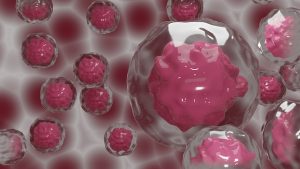Haemoglobin has an extremely important role to play in your body. But, if you’re anything like us, its complex name makes learning about this protein all the more daunting.
It’s time to make some changes! Read on to discover everything worth knowing about haemoglobin, including the role it plays in your body.
What Is Haemoglobin?
Haemoglobin is the protein that’s found in your red blood cells. It is responsible for carrying oxygen from your lungs to your tissues and organs. This alone proves just how important it is to maintain sufficient haemoglobin levels and structure.
There are two types globin proteins to be aware of here:
- Haemoglobin: Essential for transferring oxygen in your blood from your lungs to your tissues.
- Myoglobin: This is found in the muscle cells. It stores and transports oxygen.
Haemoglobin is directly linked to iron, as iron contributes to the normal function of your red blood cells and haemoglobin (EFSA, 2014).
The Structure Of Haemoglobin
The structure of haemoglobin is incredibly important as it guarantees its normal function. So, for this reason, let’s get super scientific for a second!
Haemoglobin is a protein that’s made up of four amino acid chains. Each of these four chains contains “haem”, a compound that contains iron and helps to transport oxygen in your bloodstream.
Speaking of structures, haemoglobin is completely responsible for the structure of your red blood cells (RBCs). If you didn’t know, your red blood cells resemble the shape of a doughnut, minus the hole in the middle. If your red blood cells are causing illnesses due to an unusual shape, the quality of your haemoglobin levels are usually to blame.
The Role Of Haemoglobin
Although we’ve already briefly discussed this, let’s dig deeper into the roles of hemoglobin in your body.
Haemoglobin works by binding and transporting oxygen from the capillaries in your lungs to the tissues in your body. When this process is reversed, haemoglobin is also responsible for bringing carbon dioxide back from the tissues to your lungs.
Unfortunately, haemoglobin also binds pretty easily with nitric oxide and carbon monoxide. This is an issue, as the presence of carbon monoxide prevents hemoglobin from binding to oxygen. This is one of the main reasons why carbon monoxide poisoning should be actively avoided at all costs.
How To Support Haemoglobin Function
The easiest way to support haemoglobin function is by managing your iron intake. This can be done with help from iron supplements and a balanced diet. When focusing on the diet, you should be aware of:
- Haem Iron: This is the iron that your body absorbs the easiest. It is present in a lot of animal products.
- Non-Haem Iron: This isn’t as easy for your body to absorb, but it can be found in a lot of plant based and fortified foods.
Read on to discover the most beneficial foods to eat when sourcing the different types of iron.
Sources Of Haem Iron:
- Chicken breast
- Liver
- Red meat
- Mackerel
- Canned tuna
Sources Of Non-Haem Iron:
- Beans (kidney beans)
- Fortified cereals
- Dried fruit
- Green peas
- Quinoa
As you can see, there are many ways to incorporate iron into your diet. This makes it all the more easier to support the function of haemoglobin!





